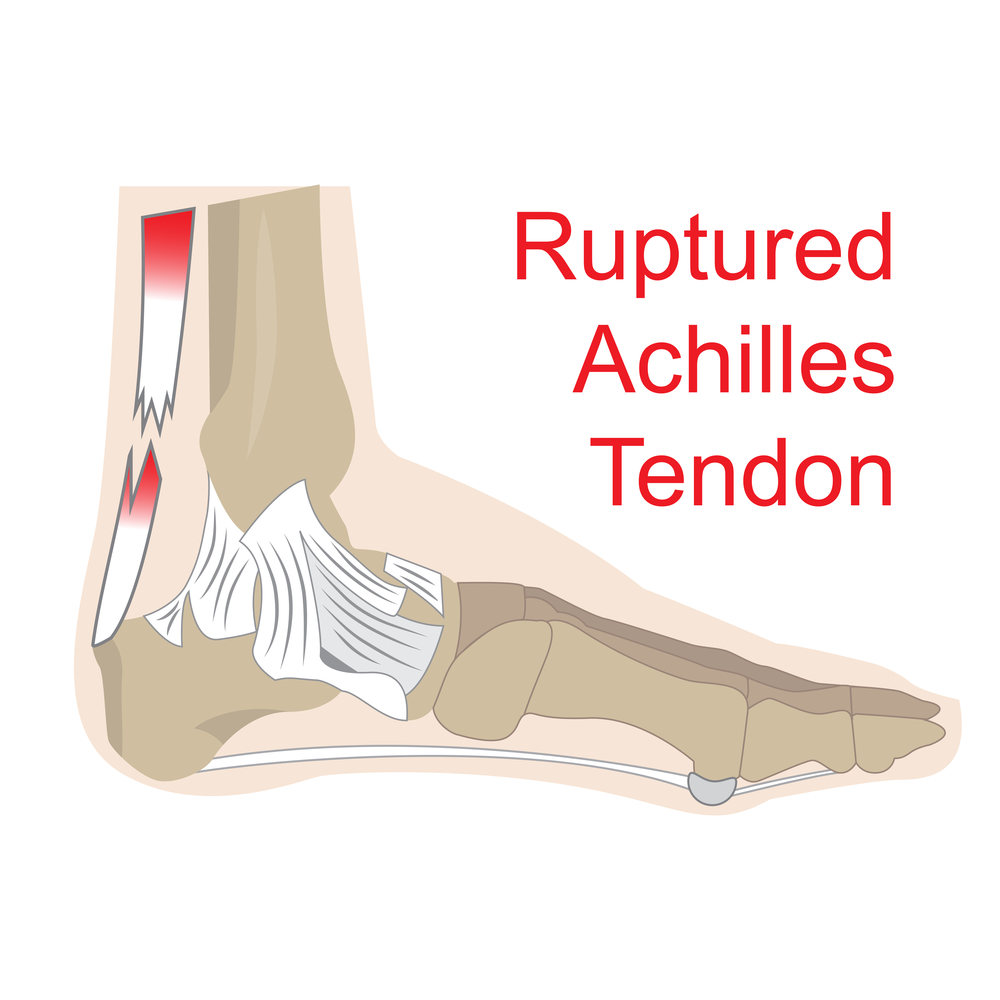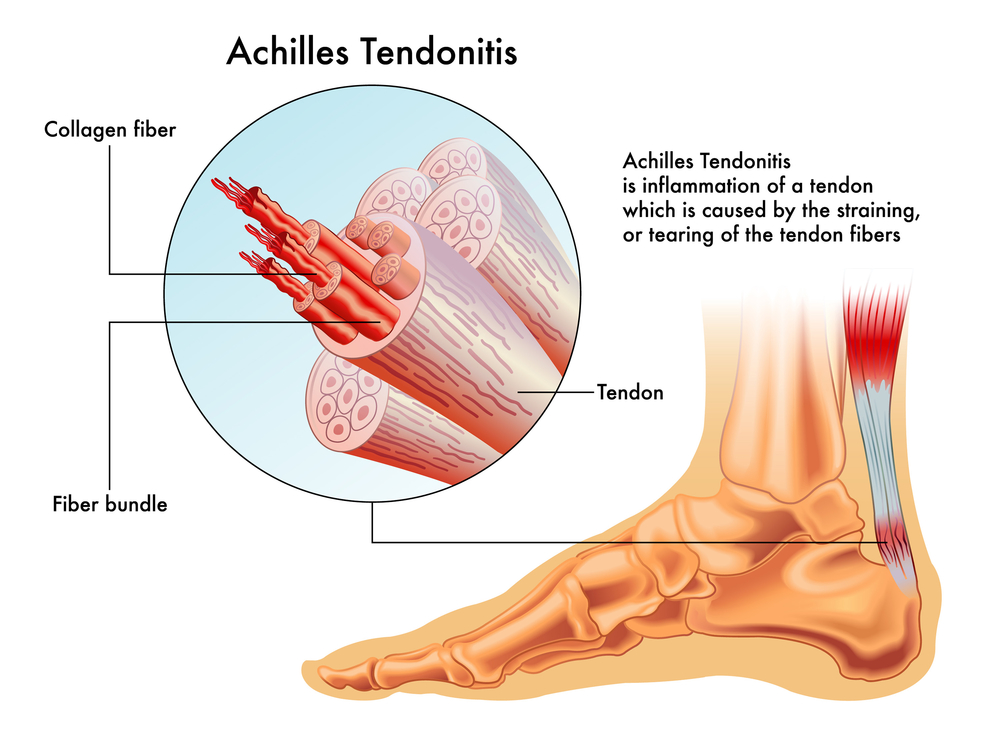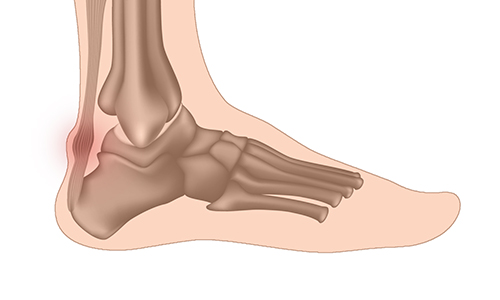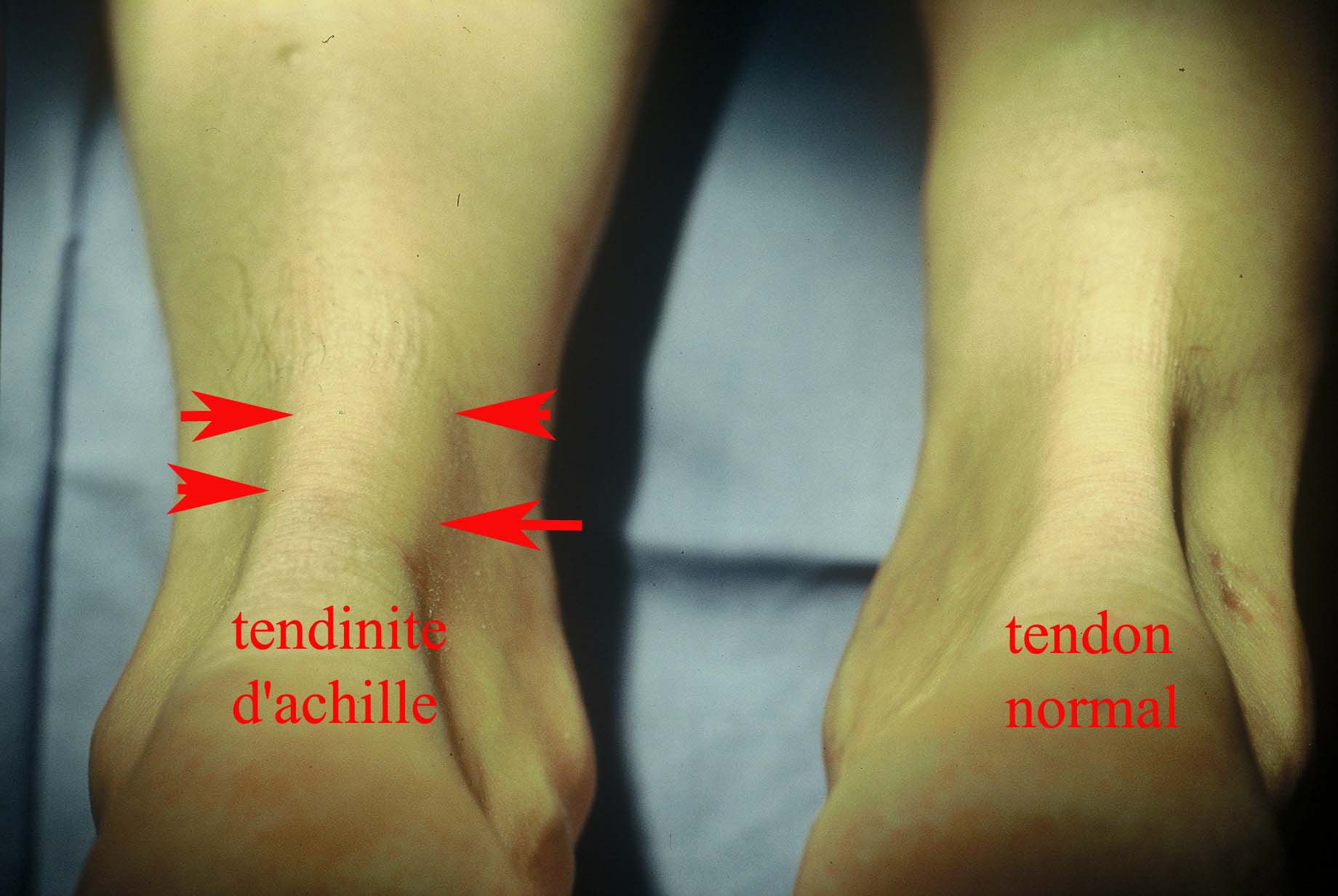
Rupture of the Achilles tendon
It occurs in middle-aged men by unusual effort. It can be a bad preparation or a sporting recovery too fast, following an impulse (volleyball, handball, tennis, etc.). This may occur more rarely in the older subject with chronic tendinitis due to underlying fragility.
The rupture is manifested by a violent pain in the back of the ankle, or a sensation of cracking, which lasts only temporarily. There is a possibility of walking but with difficulty to propel forward.
An ultrasound will be prescribed to you in case of doubt diagnosis, or to locate the location of the fracture.
The treatments depend on the activity, the location of the rupture, and the age. For the resumption of sports activities, count between 3 and 6 months depending on the field, the injury and the sport. Recurrence rates (re-rupture) are 3% with surgery versus 10% with conservative treatment (cast).
Medical treatment consists in a resin cast with raised heel for 3 weeks, then immobilization with the ankle at 90°, for another 3 weeks.
Surgical treatment, especially in case of rupture in pure tendon zone compared to muscular-tendinous junction. The rate of recurrence is lower, but the surgical gesture presents more complications. There are also open open sky or percutaneous operations (Tenolig).
In the end, the choice of treatment results from a personal decision of the patient, after having been informed in his choice by his surgeon.

Achilles tendinitis or tendinopathy
Diagnosis of Achilles Tendinitis
Management of Achilles tendinitis is complex. It often occurs in sports patients in their thirties or forties. It is one of the largest tendons in the body, strong and thick, located behind the ankle.
Achilles tendonitis is an inflammation of the tendon that becomes painful, burning, possibly swollen. It has preferential terrain for runners with excess running or a type of “pronation of the foot” race (ankle inclined inwards, support centered on the big toe). You can also find a change of shoes or sports activities, and deformations of the foot.
It may be a lesion that sits on the tendon body (corporeal), or its distal insertion on the calcaneum (enthesopathy). Tendinitis is often associated with hypertonia or retraction of triceps. This calf muscle, composed of the 2 twins muscles and the soleus, ends with the Achilles tendon, and its contraction causes the plantar flexion of the ankle.
Management of Achilles tendonitis
Achilles tendinitis imposes a 45-day sporting rest. It justifies the taking of painkillers, anti-inflammatory drugs orally or locally by ointment, combined with a gastric protector for a few days in case of ingestion. The first principle of treatment of Achilles tendonitis is therefore strict rest for 45 days and application of ice (not directly in contact with the skin), supplemented by the wearing of a heel or shoes with a small heel, to reduce tendon tension.
In addition to this minimum rest period of 45 days, it is necessary to wait 3 months before resuming a sport like running. Landfill sports such as road cycling (no mountain bike on irregular terrain) and swimming where the body weight does not press on the ankle nevertheless at 45 days.
Once the painful period has passed, it is possible to use orthopedic soles to relieve the tendon in case of deformation. Physiotherapy sessions are provided to allow eccentric work of calf muscles. This strengthens the tendon, and stretches the triceps (calf muscle). Wave’s shock sessions or ultrasound can be useful.
Corticosteroid infiltrations should be avoided because they are tendino-toxicity. This relieves pain on the spot, but does not correct the causes, thus masking an aggravation due to the persistence of the causes.
After 3 months of pain, we talk about chronic Achilles tendinitis. This may justify the prescription of an ultrasound or an MRI, to look for presence of fibrosis nodules or calcifications. At the chronic stage, as a last resort, we can propose a «combing» of the tendon. This consists of tidying up (debriding) the tendon and breaking the fibrous nodules, passing a scalpel in the direction of the fibers like a comb in the hair, thus without damaging the tendon.




